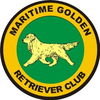Tracking is an activity where a dog follows the scent of a human being. The dog begins at a person's known starting point and follows that person's path, finding and indicating any articles the person dropped along the way. The track is laid down earlier, by a stranger, and the dog must use its nose to follow the track to the end. Because we can never completely understand how canine scenting processes work, we don’t ‘teach’ dogs how to track – we provide some guidance, and a framework in which they are able to learn what is expected, and they go on to show us how incredible their noses really are.
The dog wears a harness, and is attached to its handler by a long line, but the handler is really just along for the ride. The dog is the one that knows where it's going!
TD
The Tracking Dog Test (TD) tests dog and handler over a 400-500 metre track which has been laid by a stranger to the dog. This track has a minimum of two turns and one glove laid at the end of the track. The track is no less than one half hour old and no older than two hours.
TDX
The Tracking Dog Excellent (TDX) test is over a 900-1000 metre track which is at least three hours old, has a minimum of five turns and three articles. To make things even more difficult the track is crossed in two places by a second person. The dog is not to take these cross-tracks.
UTD
The Urban Tracking Dog (UTD) test involves the use of mixed surfaces, normally found in populated areas. The test is over a 300-400 metre track which is no more than two hours old, has a minimum of three turns and two articles. Approximately two-thirds of the track will be laid on a vegetative surface and the remainder will be laid on non-vegetative surfaces including gravel and concrete. Urban tracks can go through underpasses and under bridges, adding to the variety of surfaces.
UTDX
The Urban Tracking Dog Excellent (UTDX) test is over a 600-750 metre track which is at least three hours old, has a minimum of five turns and three articles. One-third to one-half of the track will be on a non-vegetative surface such as gravel or concrete and may include stairs and open buildings. No intentional cross tracks are added, but the the understanding is that naturally occurring cross tracks will happen.
Resources:
CKC Tracking rules and regulations
www.ckc.ca/en/Files/Forms/Shows-Trials/Event-Rules-Regulations/Tracking-Test-Rules-and-Regulations.aspx
The dog wears a harness, and is attached to its handler by a long line, but the handler is really just along for the ride. The dog is the one that knows where it's going!
TD
The Tracking Dog Test (TD) tests dog and handler over a 400-500 metre track which has been laid by a stranger to the dog. This track has a minimum of two turns and one glove laid at the end of the track. The track is no less than one half hour old and no older than two hours.
TDX
The Tracking Dog Excellent (TDX) test is over a 900-1000 metre track which is at least three hours old, has a minimum of five turns and three articles. To make things even more difficult the track is crossed in two places by a second person. The dog is not to take these cross-tracks.
UTD
The Urban Tracking Dog (UTD) test involves the use of mixed surfaces, normally found in populated areas. The test is over a 300-400 metre track which is no more than two hours old, has a minimum of three turns and two articles. Approximately two-thirds of the track will be laid on a vegetative surface and the remainder will be laid on non-vegetative surfaces including gravel and concrete. Urban tracks can go through underpasses and under bridges, adding to the variety of surfaces.
UTDX
The Urban Tracking Dog Excellent (UTDX) test is over a 600-750 metre track which is at least three hours old, has a minimum of five turns and three articles. One-third to one-half of the track will be on a non-vegetative surface such as gravel or concrete and may include stairs and open buildings. No intentional cross tracks are added, but the the understanding is that naturally occurring cross tracks will happen.
Resources:
CKC Tracking rules and regulations
www.ckc.ca/en/Files/Forms/Shows-Trials/Event-Rules-Regulations/Tracking-Test-Rules-and-Regulations.aspx

